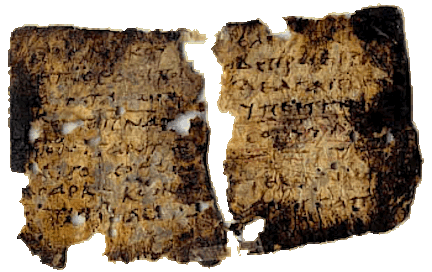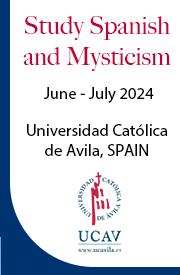As many readers of this site will already be aware, a group of 141 Catholic academics, mostly from Europe and the United States, have signed something called the Wijngaards Statement, named after the Wijngaards Institute for Catholic Research (“Promoting Gender Equality and Shared Decision-Making in the Church” since 1983) and presented it at the United Nations for its – what? approval? amusement? leisure-time reading? It appears they think the Catholic Church’s teaching on contraception needs reforming. How very cutting-edge of them.
Happily, another group of Catholic scholars wrote their own document in response: “Affirmation of the Catholic Church’s Teaching on the Gift of Sexuality.” This second, you may be pleased to hear, currently has over 500 signatures of scholars with doctoral degrees or the equivalent in medicine, law, philosophy, and theology.
Many Catholics seem to think that this argument over contraception goes back to Pope Paul VI’s 1968 encyclical Humanae Vitae. That’s not quite true, however, since the teaching goes back somewhat further than 1968. In large part, Paul VI was merely reiterating in his own words, an earlier teaching. Some Catholics might remember (or have been taught about) Pius XI’s 1930 encyclical Casti Connubii. It too is important, but not the original source.
So how far back does the Church’s opposition to contraception go? 1920? 1900? 1880? Contraception is a relatively new phenomenon, isn’t it?
As it turns out, no. If you take the time to look through the often gruesome details in the exhaustive survey Contraception: A History of its Treatment by the Catholic Theologians and Canonists by John T. Noonan – something I don’t recommend, by the way, for several reasons – you’ll discover that people have been shoving vile substances into women to try to keep them from having babies for a very long time. How long? According to Noonan, “Five different papyri, all dating from between 1900 and 1100 B.C. [yes, B.C.], provide recipes for contraceptive preparations to be used. . .” – well, let’s just say, in ways I’d prefer not to describe.

Considering the ingredients – pulverized crocodile dung in fermented mucilage? Honey and sodium carbonate? Such concoctions could scarcely have been healthy for the women required to make the effort (“required,” since this was before the time when men were able to convince women that contraception was a powerful expression of a woman’s autonomy and not an obvious function of a man’s rapacious sexual desires).
We might think the mixtures disgusting, but then again, was it really all that different from the modern practice of pumping powerful hormones into a woman’s body to fool it into thinking it is pregnant? And all that estrogen they’re pumping: where do you think they get it? If you go on-line and read that they “synthesize” it, you might still ask, synthesize it from what? How? Which chemicals? How is it “grown”? From what animals is it extracted? Once you start looking into this more closely, you might find “pulverized crocodile dung in fermented mucilage” not so strange. But whatever the specific ingredients, many ancient civilizations seem to have had concoctions or methods that they thought would keep a woman from getting pregnant after sex. We, of course, have ours.
What was the early Church’s view of all this? Faced with a Roman culture that mostly had no problem with the practice of contraception and abortion, as far as we can tell, early Christians opposed it. In the important first-century Christian text, the Didache, or Teaching of the Twelve Apostles, the author, whose name we do not know, distinguished the Way of Life from the Way of Death.
The Way of Death, as you might expect, was filled with sins, one of which was making use of pharmakeia that are “killers of offspring, corrupters of the mold [plasma] of God.” The reference seems to be to drugs used as abortifacients or contraceptives. The same teaching shows up in the first century Epistle of Barnabas. We find also in the Paedagogus of Clement of Alexandria the moral admonition: “Because of its divine institution for the propagation of man, the seed is not to be vainly ejaculated, nor is it to be damaged, nor is it to be wasted.”
Beyond these express condemnations, what is more revealing was the repeated insistence among all the early Church Fathers of the inseparability of the sexual act and its procreative purpose. This was a constant concern and a repeated theme in their preaching and teaching. “We Christians,” said the early apologist Justin Martyr, “either marry in order to produce children, or, if we refuse to marry, are completely continent.” So too the second-century bishop Athenagoras declared in a letter to the emperor in 177 that Christians do not indulge in coitus to satisfy the lusts; rather, “the procreation of children is the measure of our indulgence in appetite.”
This is necessarily a brief and simplified account of these texts. Each one should be read in its original context. I also haven’t even touched upon the serious development of that teaching in the works of later Fathers such as Augustine, Aquinas, and many others throughout the centuries. But I think it safe to say that the teaching we find expressed in Humanae Vitae and in John Paul II’s development of that teaching – the notion that the unitive and procreative dimensions of the conjugal act should not be separated – goes back throughout the entire history of the Church and has been constantly reaffirmed ever since.
But you know how it is: Augustine, Aquinas, the early Church Fathers, and 2000 years of nearly unanimous Catholic moral teaching on the one side, and 141 “scholars,” mostly from Europe, where the Church is dead (one was an actual baroness), offering a document at a U.N. meeting on the other.
Yep, it’s a toss-up. Hard to come down, one way or the other, on that one.















